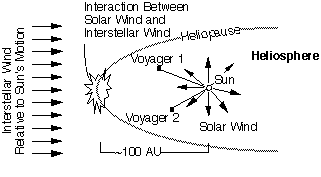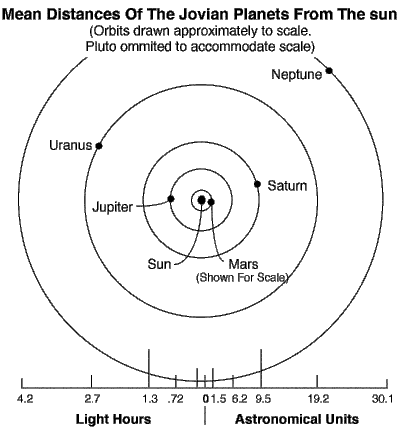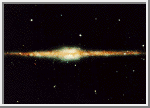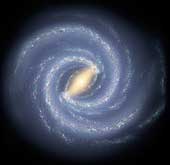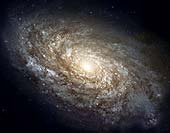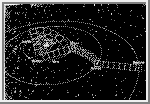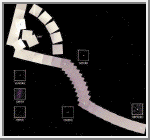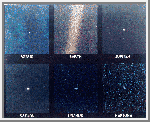Bermuda Triangle
Bermuda Triangle Secret
 Air bag is a room with air flowing at high speed.
Air bag is a room with air flowing at high speed.
Bermuda Triangle mystery is identical with the phenomenon of loss of aircraft or ships passing in the region. Object weighing hundreds or even thousands of tons can suddenly disappear as if the earth swallowed up in the region across Miami-Bermuda-Puerto Rico is.
Bermuda Triangle phenomenon occurs because of the natural phenomenon known as pocket water (air bag) or a water hole. This pocket water is now also mentioned the answer to the cause of the accident siurnya intersection that makes Adam Air plane that crashed in Sulawesi region Monday (1 / 1).
Many parties expressed a variety of reasons different to the fate of the plane that no one has found this existence. Starting from the weather disturbance, the pilot negligence, sabotage, to natural phenomena of the air bag or pocket water.
Is an expert in aviation law, who delivered Thursday Martono this possibility. Told reporters in Jakarta, Tuesday (2 / 1), there is a possibility Martono said Adam Air plane went down due to the air bag area. Because the location of the plane's disappearance was in the area of air bag point.
Martono explained that the air bag is a room with air flowing at high speed. Usually''pocket water points are located in the mountains surrounding the area,''he explained. If on top of this pocket water areas of aircraft crossed with a low altitude, he explained, this plane could have been suddenly sucked under the earth, or just hit flew upward.
In the waters around Masalembo, South Sulawesi can be said as a Bermuda-style area of Indonesia because of the swirling waters. This Round''where his run, we do not know,''he said.
This phenomenon which could explain why Martono driven aircraft pilot captain this Widodo Agustian Revri suddenly plummeted from a height of 35 thousand feet to 8 thousand feet. According Martono, pocket water phenomenon itself can not explain its origins. ''Like other natural phenomena, water pocket is also a natural phenomenon difficult to explain,''he said.
Martono explain this natural phenomenon is rarely caused the crash victims. However, he continued, accidents can happen if the appeal of this pocket of water due to unusually large. ''If the added attraction of a low altitude, the accident could have happened,''he explained.
But so far unwilling Martono stated that the loss of Adam Air in Sulawesi pocket caused by the water. ''Not like that, what I have to say is a possibility that could Adam Air plane went down because the phenomenon of water pocket,''he said. Because of that, he was reluctant to predict how likely the crash was due to an orange body this natural phenomenon.
There's no scientific explanation
In addition to its pocket water phenomenon, Martono explain Indonesia has some dangerous point for the flight. One of them is Masalembo waters in South Sulawesi, and the Gulf Bayur in West Sumatra. But natural phenomena Martono confirmed in these two different locations with natural phenomena to be possible causes of the crash of Adam Air is air pocket.
Special Masalembo waters, he said, this location had swallowed three aircraft which disappeared msiterius. Until now the fate of the missing third plane, respectively in the year 1961 can not yet discovered its existence. Therefore, Martono call this area as his Bermuda Triangle Indonesia due to the mysterious disappearance of a plane incident in this place.
Called''like that, because like the Bermuda Triangle, the phenomenon of loss of aircraft in these waters can not be explained scientifically, but it happened,''he said. Like the Bermuda Triangle, the phenomenon of loss of three aircraft in the waters Masalembo can not be explained scientifically. Moreover, until now ill-fated plane just disappeared as if swallowed by the earth.
He added that the risk of accidents, should be in January and February are not held in the shipping and aviation specific locations which are likely to pocket water. Because in these months the weather conditions worsen the natural conditions when sailing or flying. ''But, unfortunately there was considered unusual because it becomes a routine thing,''he said.
According to flight data safe spot just crash when the plane was in the air. Although''never happened, but the percentage could be ignored,''he said Thursday. In fact, the highest possible accidents at the airport. When the possibility of an accident 100 percent. While the take-off likely much lower, only 13 percent to 19 percent.
The plane is in the quiet spot while in the air. Then the possibility of accidents back up when going down, which is 81 percent to 87 percent. We had landed there was still the possibility of accidents by 1 percent. ''It's never happened in the Canary Islands when the aircraft has landed even a collision with another aircraft at the end of the runway and killed more than 500 passengers,''said Martono.
(uli / ria = republika.co.id)
Dozens of planes and ships are listed as missing in the Bermuda Triangle without a trace during the year unknown. Aircraft Star Tiger, without cause - for a clear and without sending any signal, suddenly disappeared on January 30, 1948, on his way to Bermuda with 31 passengers. Another incident on December 28, 1948, a DC-3 aircraft with 35 passengers flying from the waters above Poertorico missing Bermuda Triangle.
On January 17, 1949 Area Star aircraft, from the direction of Bermuda to Jamaica just disappear swallowed by the earth without a trace.
Bermuda term derived from the name of the seventh month of the Egyptian calendar, which is Naisan. In that farmers plant and harvest sugar cane dates. The term was later used to refer to imaginative triangle located in the Atlantic Ocean. Bermuda Triangle has an area of about 770,000 km2 and consists of group of islands - islands which number 350 islands.
Peak imaginative Bermuda, in the north of the island of Bermuda there, there tenggaranya corner Poerterico island, which is the U.S. military headquarters. Inhabitants speak Spanish and English the official language. The capital of San Juan. While western corner is located in Miami, Florida.
A specialist event - a mysterious event called Vincent Cadys marine, said that the Bermuda Triangle area is very dangerous to shipping and aviation. Approximately 100 aircraft and ships lost in this area and the victim reached more than 1000 people. Most of the mysterious events that occurred in 1945.
Then, Charles Berlins, Bermuda Triangle author of the book describes at length in his book about the loss of French ships passing through Rousalie this area in 1940. The engine is still good and its cargo was not disturbed, but the ship is not empty or manned berpenumpang. Another incident is the loss of a large freighter named Anita's USA with a cargo of 20,000 tons on March 23, 1973.
The most horrible event dubbed "Atlantic Cemetery" on the Bermuda Triangle is a calamity that had befallen the expedition-19 squadron to the United States. On Thursday, January 1945, five aircraft types Finger TTB30 departing from his base in Port Louderdidle in the Florida, USA. Fifth plane with its crew disappeared under mysterious fog without leaving a trace in the Bermuda Triangle.
What is even more remarkable efforts of scholars in solving the mystery of the Bermuda Triangle, that area there dinterpretasikan electromagnetic events - events such as the repetition of the interface back events - events that once occurred in the area because of the passage of time (time tannel). So the plane and the missing ships were still alive but was in place and another time.
Other responses about the Bermuda Triangle is a regional center of the kingdom was the devil and Satan followers - followers to control human activities in order to influence the error, according to his promise to the prophet before Adam to be decadent descendants of Adam.
On January 17, 1949 Area Star aircraft, from the direction of Bermuda to Jamaica just disappear swallowed by the earth without a trace.
Bermuda term derived from the name of the seventh month of the Egyptian calendar, which is Naisan. In that farmers plant and harvest sugar cane dates. The term was later used to refer to imaginative triangle located in the Atlantic Ocean. Bermuda Triangle has an area of about 770,000 km2 and consists of group of islands - islands which number 350 islands.
Peak imaginative Bermuda, in the north of the island of Bermuda there, there tenggaranya corner Poerterico island, which is the U.S. military headquarters. Inhabitants speak Spanish and English the official language. The capital of San Juan. While western corner is located in Miami, Florida.
A specialist event - a mysterious event called Vincent Cadys marine, said that the Bermuda Triangle area is very dangerous to shipping and aviation. Approximately 100 aircraft and ships lost in this area and the victim reached more than 1000 people. Most of the mysterious events that occurred in 1945.
Then, Charles Berlins, Bermuda Triangle author of the book describes at length in his book about the loss of French ships passing through Rousalie this area in 1940. The engine is still good and its cargo was not disturbed, but the ship is not empty or manned berpenumpang. Another incident is the loss of a large freighter named Anita's USA with a cargo of 20,000 tons on March 23, 1973.
The most horrible event dubbed "Atlantic Cemetery" on the Bermuda Triangle is a calamity that had befallen the expedition-19 squadron to the United States. On Thursday, January 1945, five aircraft types Finger TTB30 departing from his base in Port Louderdidle in the Florida, USA. Fifth plane with its crew disappeared under mysterious fog without leaving a trace in the Bermuda Triangle.
What is even more remarkable efforts of scholars in solving the mystery of the Bermuda Triangle, that area there dinterpretasikan electromagnetic events - events such as the repetition of the interface back events - events that once occurred in the area because of the passage of time (time tannel). So the plane and the missing ships were still alive but was in place and another time.
Other responses about the Bermuda Triangle is a regional center of the kingdom was the devil and Satan followers - followers to control human activities in order to influence the error, according to his promise to the prophet before Adam to be decadent descendants of Adam.
Until Masalembo Bermuda Triangle
 Air bag is a room with air flowing at high speed.
Air bag is a room with air flowing at high speed. Bermuda Triangle mystery is identical with the phenomenon of loss of aircraft or ships passing in the region. Object weighing hundreds or even thousands of tons can suddenly disappear as if the earth swallowed up in the region across Miami-Bermuda-Puerto Rico is.
Bermuda Triangle phenomenon occurs because of the natural phenomenon known as pocket water (air bag) or a water hole. This pocket water is now also mentioned the answer to the cause of the accident siurnya intersection that makes Adam Air plane that crashed in Sulawesi region Monday (1 / 1).
Many parties expressed a variety of reasons different to the fate of the plane that no one has found this existence. Starting from the weather disturbance, the pilot negligence, sabotage, to natural phenomena of the air bag or pocket water.
Is an expert in aviation law, who delivered Thursday Martono this possibility. Told reporters in Jakarta, Tuesday (2 / 1), there is a possibility Martono said Adam Air plane went down due to the air bag area. Because the location of the plane's disappearance was in the area of air bag point.
Martono explained that the air bag is a room with air flowing at high speed. Usually''pocket water points are located in the mountains surrounding the area,''he explained. If on top of this pocket water areas of aircraft crossed with a low altitude, he explained, this plane could have been suddenly sucked under the earth, or just hit flew upward.
In the waters around Masalembo, South Sulawesi can be said as a Bermuda-style area of Indonesia because of the swirling waters. This Round''where his run, we do not know,''he said.
This phenomenon which could explain why Martono driven aircraft pilot captain this Widodo Agustian Revri suddenly plummeted from a height of 35 thousand feet to 8 thousand feet. According Martono, pocket water phenomenon itself can not explain its origins. ''Like other natural phenomena, water pocket is also a natural phenomenon difficult to explain,''he said.
Martono explain this natural phenomenon is rarely caused the crash victims. However, he continued, accidents can happen if the appeal of this pocket of water due to unusually large. ''If the added attraction of a low altitude, the accident could have happened,''he explained.
But so far unwilling Martono stated that the loss of Adam Air in Sulawesi pocket caused by the water. ''Not like that, what I have to say is a possibility that could Adam Air plane went down because the phenomenon of water pocket,''he said. Because of that, he was reluctant to predict how likely the crash was due to an orange body this natural phenomenon.
There's no scientific explanation
In addition to its pocket water phenomenon, Martono explain Indonesia has some dangerous point for the flight. One of them is Masalembo waters in South Sulawesi, and the Gulf Bayur in West Sumatra. But natural phenomena Martono confirmed in these two different locations with natural phenomena to be possible causes of the crash of Adam Air is air pocket.
Special Masalembo waters, he said, this location had swallowed three aircraft which disappeared msiterius. Until now the fate of the missing third plane, respectively in the year 1961 can not yet discovered its existence. Therefore, Martono call this area as his Bermuda Triangle Indonesia due to the mysterious disappearance of a plane incident in this place.
Called''like that, because like the Bermuda Triangle, the phenomenon of loss of aircraft in these waters can not be explained scientifically, but it happened,''he said. Like the Bermuda Triangle, the phenomenon of loss of three aircraft in the waters Masalembo can not be explained scientifically. Moreover, until now ill-fated plane just disappeared as if swallowed by the earth.
He added that the risk of accidents, should be in January and February are not held in the shipping and aviation specific locations which are likely to pocket water. Because in these months the weather conditions worsen the natural conditions when sailing or flying. ''But, unfortunately there was considered unusual because it becomes a routine thing,''he said.
According to flight data safe spot just crash when the plane was in the air. Although''never happened, but the percentage could be ignored,''he said Thursday. In fact, the highest possible accidents at the airport. When the possibility of an accident 100 percent. While the take-off likely much lower, only 13 percent to 19 percent.
The plane is in the quiet spot while in the air. Then the possibility of accidents back up when going down, which is 81 percent to 87 percent. We had landed there was still the possibility of accidents by 1 percent. ''It's never happened in the Canary Islands when the aircraft has landed even a collision with another aircraft at the end of the runway and killed more than 500 passengers,''said Martono.
(uli / ria = republika.co.id)
Read User's Comments (0)
















